Impact of combiner aerobic and resistance training on depression: a systematic review and meta-analysis of randomized controlled trials
- PMID: 39849618
- PMCID: PMC11756182
- DOI: 10.1186/s13102-025-01058-w
Impact of combiner aerobic and resistance training on depression: a systematic review and meta-analysis of randomized controlled trials
Abstract
Objective: To summarize the existing literature and evaluate the efficacy of combined resistance and aerobic training in alleviating depressive symptoms among individuals with depression. Subgroup analyses were conducted based on study region, age, depression severity, intervention duration, intervention frequency, and whether the intervention was supervised or unsupervised.
Methods: Five databases were thoroughly examined from database establishment until August 20, 2024, to find randomized controlled trials that investigated resistance combined aerobic training impact on depression.
Results: Finally, 27 eligible studies were included, involving a total of 2,342 patients with depression. The outcomes indicated that resistance combined aerobic training notably improved signs of depression in these patients (SMD=-1.39, 95%CI=-1.80 to -0.96, p = 0.000). Subgroup analysis based on study area, age, severity of depressive symptoms, and exercise prescription revealed that resistance combined aerobic training had a particularly significant effect on middle-aged and elderly patients with depression, as well as on those with moderate depression. Additionally, moderate period (9-24 weeks), moderate frequency (3-4 times per week), a total weekly duration of more than 180 min and supervised training displayed the best results.
Conclusion: Resistance combined aerobic training serves as an efficient approach to relieve depression-related symptoms, particularly in middle-aged and elderly patients with depression and those with moderate depression. Moderate training intensity, duration, frequency, and total weekly duration offer the greatest benefit.
Keywords: Resistance training, Depression, Aerobic training, Meta-analysis.
© 2025. The Author(s).
Conflict of interest statement
Declarations. Ethics approval and consent to participate: Not applicable. Consent for publication: Not applicable. Competing interests: The authors declare no competing interests.
Figures



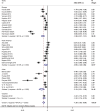

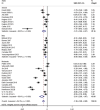
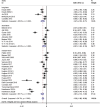

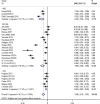
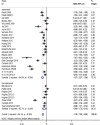

Similar articles
-
Optimal exercise dose and type for improving sleep quality: a systematic review and network meta-analysis of RCTs.Front Psychol. 2024 Oct 3;15:1466277. doi: 10.3389/fpsyg.2024.1466277. eCollection 2024. Front Psychol. 2024. PMID: 39421847 Free PMC article.
-
Effect of exercise intervention on depression in children and adolescents: A systematic review and network meta-analysis.J Affect Disord. 2023 Oct 11:S0165-0327(23)01209-0. doi: 10.1016/j.jad.2023.10.044. Online ahead of print. J Affect Disord. 2023. PMID: 37832731 Review.
-
Behavioural modification interventions for medically unexplained symptoms in primary care: systematic reviews and economic evaluation.Health Technol Assess. 2020 Sep;24(46):1-490. doi: 10.3310/hta24460. Health Technol Assess. 2020. PMID: 32975190 Free PMC article.
-
Influence of aerobic exercise on depression in young people: a meta-analysis.BMC Psychiatry. 2024 Aug 20;24(1):571. doi: 10.1186/s12888-024-06013-6. BMC Psychiatry. 2024. PMID: 39164715 Free PMC article.
-
Systematic review and meta-analysis of the effects of exercise on depression in adolescents.Child Adolesc Psychiatry Ment Health. 2022 Feb 28;16(1):16. doi: 10.1186/s13034-022-00453-2. Child Adolesc Psychiatry Ment Health. 2022. PMID: 35227300 Free PMC article. Review.
Cited by
-
Age-dependent mechanisms of exercise in the treatment of depression: a comprehensive review of physiological and psychological pathways.Front Psychol. 2025 Apr 17;16:1562434. doi: 10.3389/fpsyg.2025.1562434. eCollection 2025. Front Psychol. 2025. PMID: 40313907 Free PMC article. Review.
References
-
- Moussavi S, Chatterji S, Verdes E, Tandon A, Patel V, Ustun B. Depression, chronic diseases, and decrements in health: results from the World health surveys. Lancet. 2007;370(9590):851–8. 10.1016/S0140-6736(07)61415-9. - PubMed
-
- You Y, Li J, Zhang Y, Li X, Li X, Ma X. Exploring the potential relationship between short sleep risks and cognitive function from the perspective of inflammatory biomarkers and cellular pathways: insights from population-based and mice studies. CNS Neurosci Ther. 2024;30(5):e14783. 10.1111/cns.14783. - PMC - PubMed
-
- You Y, Wang R, Li J, Cao F, Zhang Y, Ma X. The role of dietary intake of live microbes in the association between leisure-time physical activity and depressive symptoms: a population-based study. Appl Physiol Nutr Metab. 2024;49(8):1014–24. 10.1139/apnm-2023-0550. - PubMed
-
- Gartlehner G, Gaynes BN, Amick HR, Asher GN, Morgan LC, Coker-Schwimmer E, Forneris C, Boland E, Lux LJ, Gaylord S, Bann C, Pierl CB, Lohr KN. Comparative benefits and Harms of antidepressant, psychological, complementary, and Exercise treatments for Major Depression: an evidence report for a clinical practice Guideline from the American College of Physicians. Ann Intern Med. 2016;164(5):331. 10.7326/M15-1813. - PubMed
-
- Newsome AM, Batrakoulis A, Camhi SM, Alexander C. 2025. Future Directions of the Health and Fitness Industry: ACSM Worldwide Fitness Trends; 2025.
LinkOut - more resources
Full Text Sources

